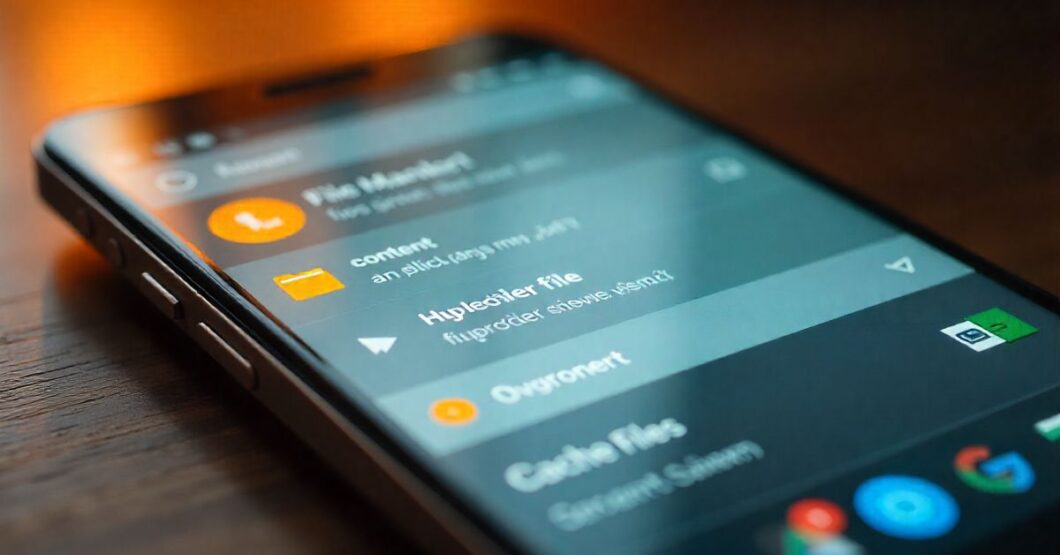Ever opened your phone’s file manager and spotted a strange-looking file path like this?
content cz mobilesoft appblock fileprovider cache blank html
It looks weird, right? Almost like something’s broken or you’ve stumbled onto a hacker’s leftover file. But before you panic or go on a deleting spree, let’s slow things down.
In this guide, I’ll explain exactly what this file is, why it’s there, and most importantly — why you don’t need to worry about it. It’s part of how certain Android apps (like AppBlock) work behind the scenes.
So, let’s get into it—without the jargon and with just the info you really need.
So, What Even Is AppBlock?
AppBlock is a popular app that helps you stay focused by blocking distracting apps or websites on your Android phone. Whether you’re studying, working, or just trying to spend less time on social media, AppBlock is your digital bodyguard.
But like many Android apps, it needs to store temporary files to do all of this. That’s where “fileprovider cache” stuff comes in — Android’s way of letting apps keep temporary, private data securely.
Breaking It Down: What Does That Weird File Path Mean?
Let’s decode that content cz mobilesoft appblock fileprovider cache blank html message bit by bit. Here’s a quick table that explains what each part actually means:
| Part of the Path | What It Really Is |
|---|---|
content:// |
A safe Android link to a file—used instead of exact file addresses |
cz.mobilesoft.appblock |
The official name of the AppBlock app |
fileprovider |
Android’s way of keeping files safe between apps |
cache |
A temporary folder for fast access files (you can delete this!) |
blank.html |
A placeholder page—usually used when AppBlock is blocking a site |
So altogether, it’s just a small, temporary file that AppBlock uses to do its job — like redirecting a blocked website to a blank page instead of letting it load.
No code. No virus. No hacker stuff. Just boring app internals doing their thing.
Wait—What’s a blank.html Doing on My Phone?
Great question. That tiny blank.html file actually plays a useful role in making AppBlock work smoothly.
Here’s what it usually does:
- Redirects blocked pages – Instead of loading TikTok or Facebook, it shows a “blank” or blocked screen.
- Fills empty space – Sometimes apps need a visual buffer. This file does that silently.
- Keeps temporary content ready – It helps block stuff faster the next time.
It’s almost always empty or just a few lines of code — no data is stored in it.
Is This File Dangerous or a Security Risk?
Short answer: Nope. Not even close.
Long answer: Your Android operating system is full of safeties. And AppBlock follows security standards laid down by Google. Here’s why this file is totally safe:
- It’s created by AppBlock, not some unknown app.
- It stays inside AppBlock’s private folders — no other app can touch it.
- It doesn’t send or collect any personal information.
- It’s just a tool being used to redirect or temporarily display a page.
Honestly, it’s safer than most things on your phone.
✔️ You don’t need to delete it at all. But if you want to free up space, you totally can. No harm done.
Should I Delete It? Will Anything Go Wrong?
You can delete it — but you don’t need to.
If you’re the type who likes keeping your storage squeaky clean, here’s how to do it safely:
Option 1: Clear AppBlock’s Cache via Settings
- Open Settings
- Go to Apps > AppBlock
- Tap on Storage & cache
- Hit Clear Cache
Done! That will wipe that little blank.html file (and other temp data) clean.
Option 2: Use a File Cleaner App
Apps like Files by Google are good at spotting unnecessary files and clearing them up. Just make sure you don’t use shady “cleaner” apps — they can do more harm than good.
🚫 Avoid deleting folders manually unless you’re tech-savvy. Stick with proper tools when in doubt.
Why Android Uses “FileProvider” Now (2025 Update)
If you’ve used Android for a while, you might remember the old days when apps could access each other’s files easily. Not anymore.
As of Android 11 and newer (we’re on Android 15 in 2025), Google introduced “Scoped Storage” and FileProvider. It’s all about:
- Protecting your privacy from snoopy apps
- Blocking apps from messing with your personal data
- Preventing file exposure bugs
AppBlock is one of those “good citizen” apps that follows these rules. So that’s why you see this kind of path — it’s Android doing security right.
Does It Slow Down My Phone?
Not even a little.
This file is usually less than 1 KB in size. For perspective, that’s smaller than a selfie’s file name.
BUT – If you’ve got lots of cache buildup from many apps, that can slow things slightly. Here’s what to do:
| Tip | Why It Helps |
|---|---|
| Clear cache every month | Keeps performance sharp |
| Use trusted tools like Files by Google | Smart cleanup with no risk |
| Ignore system folders unless necessary | Avoids breaking other apps |
One little HTML file won’t do damage. But a hundreds-of-megabytes cache might.
Still Curious? Here’s a Quick Summary
Here’s the lowdown on content cz mobilesoft appblock fileprovider cache blank html—in everyday words:
| Question | Answer |
|---|---|
| What is it? | A simple placeholder file created by AppBlock |
| Is it a virus or spying tool? | Not at all — totally safe |
| Can I delete it? | Yes, if you want; no harm done |
| Will it get recreated? | Probably, if AppBlock needs it again |
| Should I worry about it? | Nope—just ignore it or clear cache if it bothers you |
Real-World Example
Let’s say you set AppBlock to block YouTube during work hours. When you try to open it, AppBlock might redirect your browser or app to a blank.html file — showing a blocked screen.
Behind the scenes, that file sits quietly in your cache folder as a little placeholder.
Conclusion
If this file spooked you—relax! You’re not alone. Many users google strange file names every day. But now that you know what this is, you’re ahead of the curve.
Goodbye confusion, hello clarity. 👋
All these cached files are just part of how Android and apps operate in 2025. They help apps stay secure, fast, and up-to-date.
- Yes – it’s safe
- Yes – you can delete it
- No – it’s not harmful
So the next time you see something like content cz mobilesoft appblock fileprovider cache blank html, don’t freak out. Just smile and say, “I know what that is.”
FAQs
Is this file safe?
Yes, it’s harmless and created by AppBlock.
Can I delete it?
Sure! Just clear AppBlock’s cache.
Why does it keep coming back?
Because AppBlock recreates it when needed.
Is it tracking me?
Absolutely not—it doesn’t even contain personal data.
Will it affect my phone?
Nope. It has zero performance impact.
What You Should Do Now
Open your phone, clear out some old app cache, and give your device a fresh start. No need to stress over system files you now understand.
Take a minute today to clear your device’s cache. One minute. Big difference. 💡




